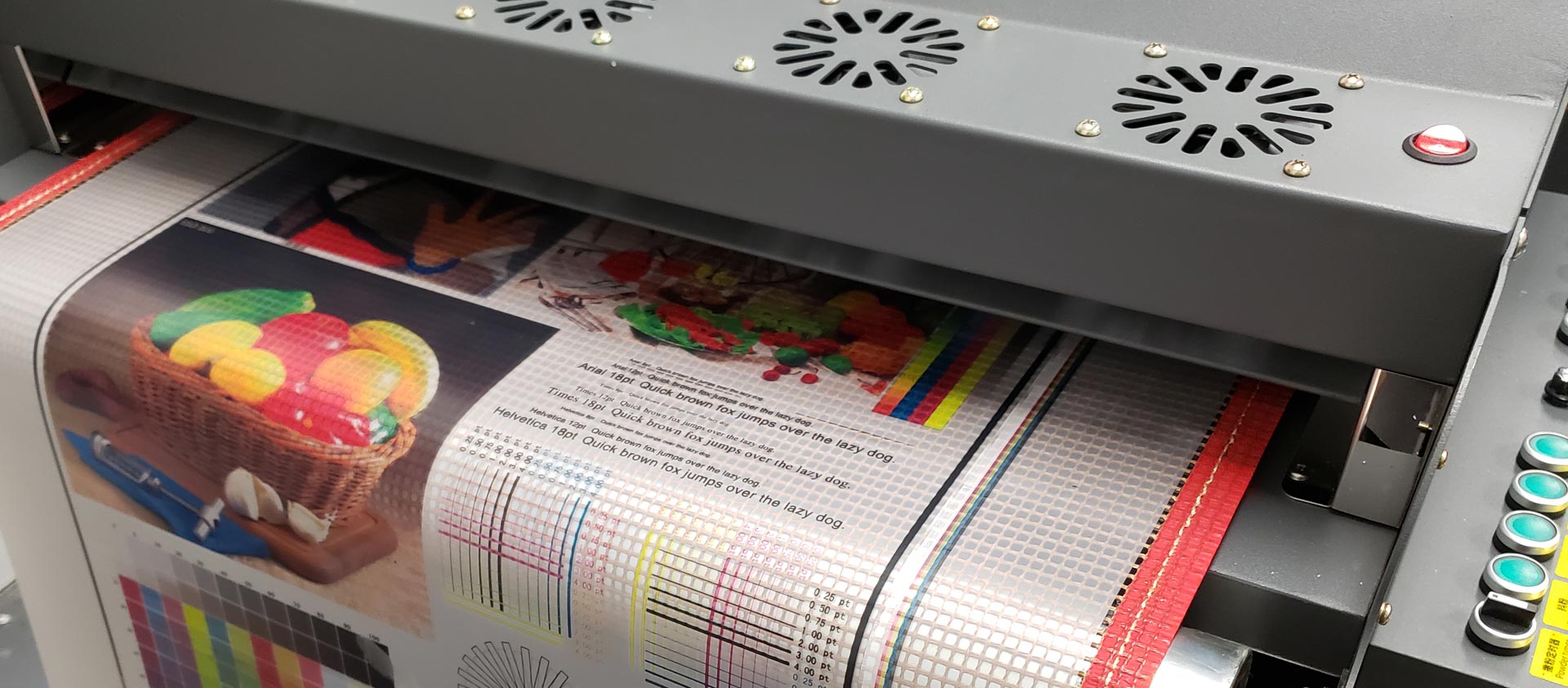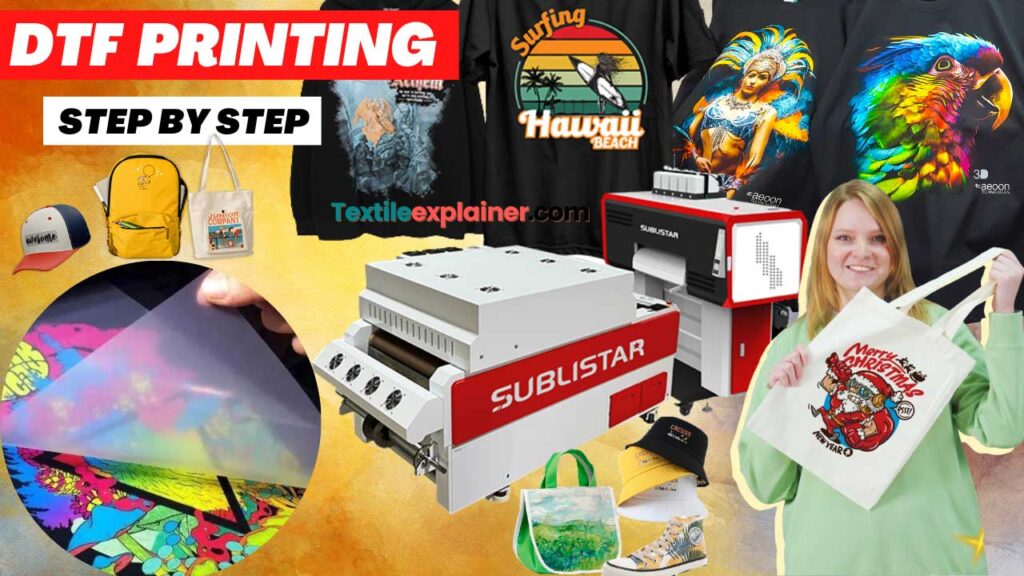DTF Printing Change: Releasing Creativity in Fabric Design and Manufacturing
DTF Printing Change: Releasing Creativity in Fabric Design and Manufacturing
Blog Article
Ultimate Overview to DTF Printing Methods for Sensational Textile Designs
Getting started on the trip of mastering DTF printing techniques can open up a globe of possibilities for creating aesthetically exciting textile styles. In this overview, we will certainly explore the complex details of DTF printing, from grasping the basic fundamentals to unraveling progressed color strategies that can raise your layouts to brand-new elevations.
Comprehending DTF Printing Fundamentals
DTF printing, a procedure that includes moving layouts from an unique film to textiles using warmth and pressure, creates the structure of fabric printing strategies. This innovative method enables premium, dynamic layouts to be seamlessly transferred onto various fabrics with accuracy and information. The initial step in DTF printing involves creating or selecting a layout that will be published onto the fabric. This design is then printed onto an unique film making use of a DTF printer, which utilizes certain dyes or pigments to ensure shade precision and toughness.
As soon as the layout is published on the movie, it is then thoroughly placed onto the fabric, guaranteeing proper positioning and positioning. The following essential step includes using heat and stress utilizing a warm press equipment. This process activates the dyes or pigments on the film, causing them to sublimate and bond with the textile fibers permanently. The final outcome is a magnificent, resilient textile design that is washable, versatile, and immune to fading. Overall, recognizing the fundamentals of DTF printing is essential for grasping this contemporary textile printing strategy.
Selecting the Right Textile Materials
Having actually established the fundamental concepts of DTF printing strategies for fabric styles, the next crucial consideration exists in choosing the appropriate textile materials to complement this cutting-edge process successfully. The success of a DTF print greatly depends on the compatibility between the picked textile and the printing method. When choosing textile products for DTF printing, it is necessary to take into consideration the textile's structure, weave, and structure. Fabrics that work well with DTF printing include polyester blends, spandex, nylon, and various other artificial materials. These materials normally have a smooth surface that permits detailed and vibrant prints. Furthermore, the stretchability of these materials can fit the heat transfer process associated with DTF printing without distorting the design. It is recommended to avoid all-natural fibers such as cotton or silk, as they may not yield the exact same level of print quality and toughness. By choosing the appropriate fabric products, designers can optimize the potential of DTF printing to develop resilient and stunning textile layouts.

Understanding the Printing Refine
To excel in DTF printing methods for textile layouts, understanding the printing procedure is necessary for accomplishing top quality and constant results. The temperature level, pressure, and period of warmth application must be very carefully managed to Read Full Report ensure appropriate bond of the style to the fabric. By refining each of these actions in the printing process, developers can consistently generate sensational and resilient fabric layouts with DTF printing strategies.
Enhancing Styles With Shade Methods

Additionally, trying out with color gradients can bring a sense of motion and fluidity to the style. By blending colors flawlessly, a gradient effect can be achieved, adding a fantastic read a vibrant and modern-day touch to the fabric design. Additionally, using color blocking techniques can produce striking and strong visuals by comparing various solid shades in unique areas of the style.
Furthermore, incorporating metallic or neon shades can offer a distinctive and one-of-a-kind element to the fabric style, making it attract attention and exude a sense of vibrancy. When purposefully used, these shade methods can elevate the total aesthetic charm of textile designs, making them extra captivating and remarkable.
Troubleshooting Common DTF Printing Issues
After discovering different color strategies to improve fabric styles, it is important to resolve common DTF printing issues that may emerge during the manufacturing process. One common problem is inadequate adhesion, which can arise from improper healing temperatures or times. To fix this issue, make sure that the treating setups are precise and that the adhesive utilized appropriates for the particular material being printed on. One more regular obstacle is color disparities, where shades may appear in a different way than anticipated. This can be triggered by inaccurate shade profiles or setups in the printing software. To tackle this, verify the color settings and profiles to guarantee they match the designated style. Furthermore, issues with photo clarity and sharpness can occur because of low-resolution pictures or inappropriate printing methods. To address this, always make use of top quality pictures and readjust the printing settings for ideal clarity. By knowing these typical troubles and carrying out the necessary troubleshooting actions, you can visit site enhance the overall top quality of your DTF published fabric styles.
Verdict
Finally, grasping DTF printing methods is essential for developing magnificent textile designs. By recognizing the essentials of DTF printing, picking the best products, and boosting layouts with shade techniques, one can achieve outstanding outcomes. It is necessary to repair common problems that may emerge throughout the printing process to make sure an effective end result. With method and interest to information, one can create unique and beautiful textile layouts utilizing DTF printing strategies.
DTF printing, a procedure that involves transferring layouts from a special movie to textiles utilizing warmth and stress, forms the foundation of fabric printing strategies.Having actually developed the foundational concepts of DTF printing strategies for fabric layouts, the next important consideration lies in picking the appropriate textile materials to match this cutting-edge process effectively. By picking the best fabric materials, developers can make the most of the potential of DTF printing to produce stunning and lasting textile styles.
To succeed in DTF printing techniques for textile designs, mastering the printing process is vital for achieving high-quality and constant results. DTF Printing. By developing each of these steps in the printing procedure, designers can constantly create magnificent and resilient textile styles with DTF printing methods
Report this page